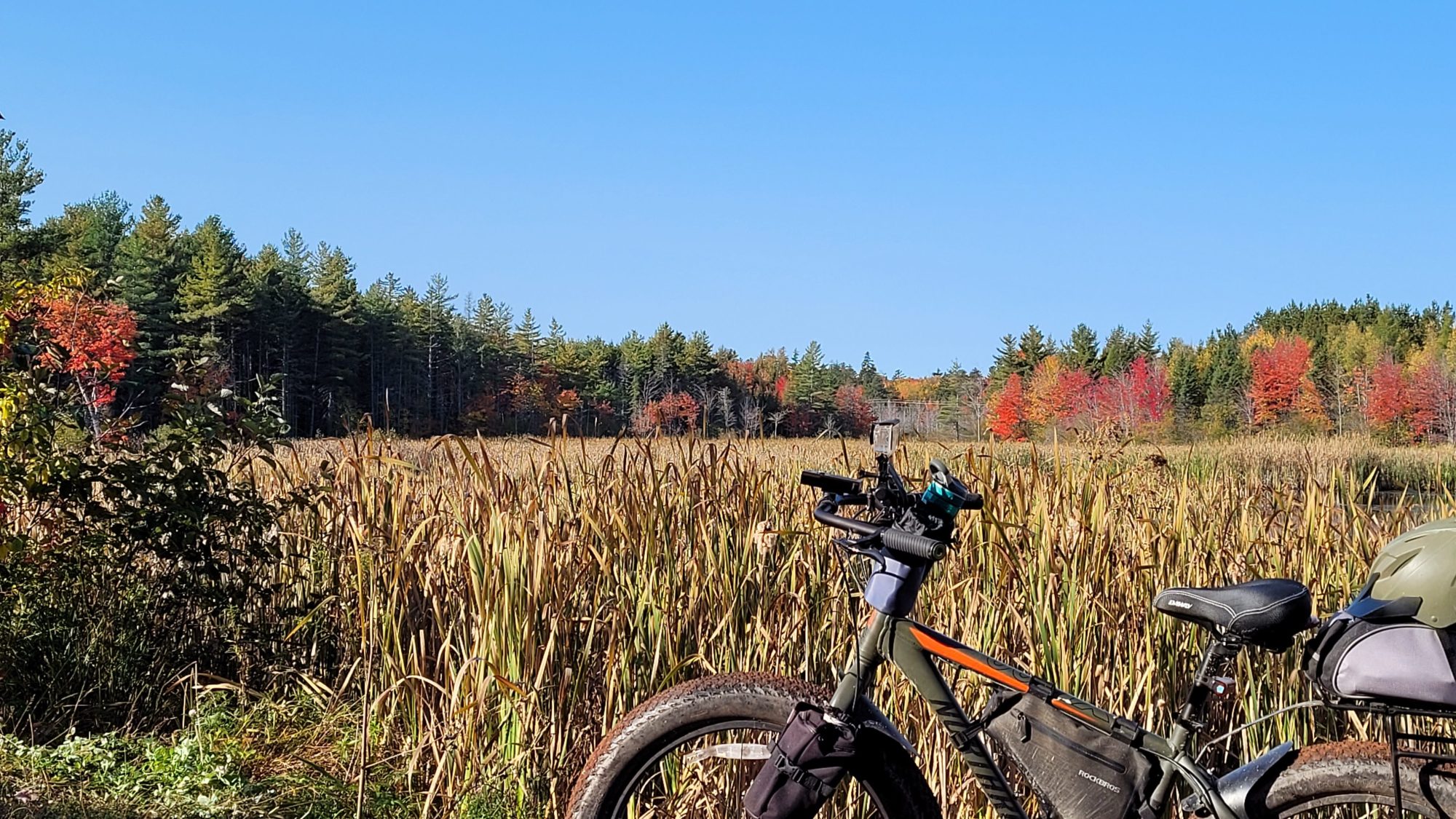When most people think of fatbikes, they picture snow-covered trails or sand dunes—niche terrain where those oversized tires shine. But what if I told you fatbikes are also solid rigs for bikepacking? Not just capable—but comfortable, reliable, and honestly underrated.
I started bikepacking in March 2020 on a $500 Northrock fatbike from Costco. Nothing fancy. Just a 7-speed, aluminum-framed beast with 4-inch-wide tires and a thirst for adventure. Five years and over 6,000 kilometres later, I’m still riding that same bike—and still enjoying it. No breakdowns, no failures, and believe it or not, I’m even on the original tires.
Comfort Over Speed
If your idea of bikepacking is more about soaking in the landscape than racing to the next stop, then a fatbike might be the perfect fit. They aren’t built for speed—let’s get that out of the way. Loaded up, I cruise at around 15 km/h. Compare that to my Marin Stinson 1, which clocks in at 19–21 km/h with the same gear load. But the ride quality? That’s where the fatbike really earns its stripes.
The wide tires, usually running at 8–12 psi, act like suspension. They smooth out rough gravel, washboard logging roads, sand, snow, and just about anything else you can throw at them. You’re not bouncing around or getting beat up by the terrain. Instead, you’re floating across it. It’s a different kind of ride. Slower, sure. But more immersive. You feel connected to the environment you’re pedalling through. And isn’t that the point of bikepacking?
Starting at 52: Age Is Just a Number
I was 52 when I started bikepacking—on that Northrock fatbike—and I haven’t looked back. For anyone in their 50s or beyond who’s wondering if they’ve missed the window for this kind of adventure, let me tell you straight: age is just a number.
In fact, starting on a fatbike at that stage in life was one of the best choices I’ve made. The stability, comfort, and confidence that wide tires give you is unbeatable—especially if it’s been a few years since you’ve done any real riding. But more importantly, fatbiking is a full-body workout. It builds strength—especially in your legs and core—without the high impact of other sports. And every kilometre you pedal, every hill you grind up, you’re getting stronger.
It doesn’t happen overnight, but that’s the beauty of it. With each ride, you feel it. More stamina. Better balance. Stronger lungs. You’re not just riding—you’re rebuilding. One pedal stroke at a time.
And the sense of freedom? That only gets better with age.
The Northrock Experience
The Northrock fatbike isn’t a high-end machine. It’s a simple 7-speed setup, steel frame, mechanical brakes. But it’s proven itself over thousands of kilometres. I did make a few upgrades over time. I swapped in a smaller chainring and a larger freewheel for better climbing power. Still 7-speed, but with a lower gear that makes hauling gear up long climbs a bit more manageable.
Interestingly, my Marin Stinson 1 is also a 7-speed. With only a few teeth difference in gearing and slightly narrower 2.35″ tires, it climbs a little easier. But comfort-wise, it’s no match for the fatbike, especially when the trail gets rough or loose.
That said, fatbikes aren’t light. My Northrock weighs in around 35–40 lbs unloaded. Strap on bags, water, and camping gear, and you’re easily pushing 60+ lbs. That’s a lot of bike to keep rolling. It’s why you see more gear-focused upgrades on modern fatbikes—bigger drivetrains, lighter frames, carbon forks. I’ll admit, I’ve been tempted to upgrade to an 11- or 12-speed fatbike more than once. But honestly, the old Northrock still works. And it’s proven it can handle just about anything I throw at it.
Fatbike vs. “Normal” Bikepacking Rigs
Let’s break it down. Here’s what a fatbike brings to the bikepacking table:
Pros:
- Comfort: Fat tires cushion everything—roots, rocks, potholes, and washboard.
- Traction: Whether it’s snow, mud, or loose gravel, fat tires grip and keep you upright.
- Load Capacity: Fatbike frames and forks are usually overbuilt, meaning they can carry more gear without flexing or failing.
- Versatility: From backroads to sandbars to snowshoe trails, you’re not limited to smooth singletrack.
Cons:
- Speed: You won’t be winning any KOMs. But that’s not the point.
- Weight: They’re heavy, especially with basic components.
- Rolling Resistance: Big tires take energy to keep moving. If you’re not used to it, it can feel sluggish.
Bottom line? If you want to enjoy the journey, explore off the beaten path, and don’t mind a slower pace, fatbikes are awesome for bikepacking.
“Can You Outrun a Bear on That Thing?”
True story—someone once asked me if I could outrun a bear on my fatbike. I just laughed. “Nope,” I told him. “But I doubt I could do it on any bike.” The truth is, bikepacking isn’t about outrunning anything. It’s about unplugging, exploring, and testing your own pace—not racing the wildlife.
Ride the Bike You Have
This is probably the most important takeaway: you don’t need a top-tier setup to start bikepacking. Ride the bike you have. Upgrade as you go. Learn what works for your body, your terrain, and your style.
For me, small changes—like tweaking the gearing or dialing in tyre pressure—made a big difference. You don’t need to drop thousands to get out there. I started with a $500 bike and have seen more of the country than most people do in a decade.
The Slow Lane is the Scenic Lane
Cycling is one of the best ways to immerse yourself in nature. When you’re grinding up a hill at 10 km/h, you notice things—a hawk circling above, the scent of spruce and cedar, the way fog rolls off a lake in the morning. You don’t get that in a car, or even on a fast road bike.
Fatbikes slow you down, but that’s not a flaw—it’s a feature. They let you absorb every kilometre. You’re not just passing through. You’re part of the landscape.
When a Fatbike Might Not Be the Right Choice
As much as I enjoy bikepacking on a fatbike, it’s not the perfect setup for everyone. Depending on your riding style, terrain, and goals, there are a few reasons why a fatbike might not be the best choice:
1. Speed Matters to You
If you’re planning long-distance routes with high daily mileage goals—or if you’re bikepacking with faster riders on gravel or road bikes—you’ll likely find a fatbike too slow. The rolling resistance and weight make keeping pace difficult.
2. You’ll Be Riding Mostly Pavement or Hardpack
Fatbikes shine on loose terrain: gravel, sand, snow, mud. But if your route is 90% pavement or well-packed trail, you’re not really using what makes a fatbike great. You’ll be dragging around extra weight and sluggish tires for no reason.
3. You’re Focused on Efficiency and Light Packing
Fatbikes are inherently heavier. If you’re aiming for an ultra-light setup or doing high-altitude climbs where every gram counts, you might find the bulk of a fatbike unnecessary—or frustrating.
4. Limited Gear Compatibility
Some budget fatbikes (like my Northrock) come with fewer mounting points or proprietary parts that limit how you can set them up for touring. You can work around this, but it takes creativity—or a bit of compromise.
5. You Have Space or Storage Constraints
Fatbikes are big—wide bars, long wheelbases, bulky tires. If you’re travelling internationally, living in a small space, or loading your bike into compact vehicles, that extra size can be a pain.
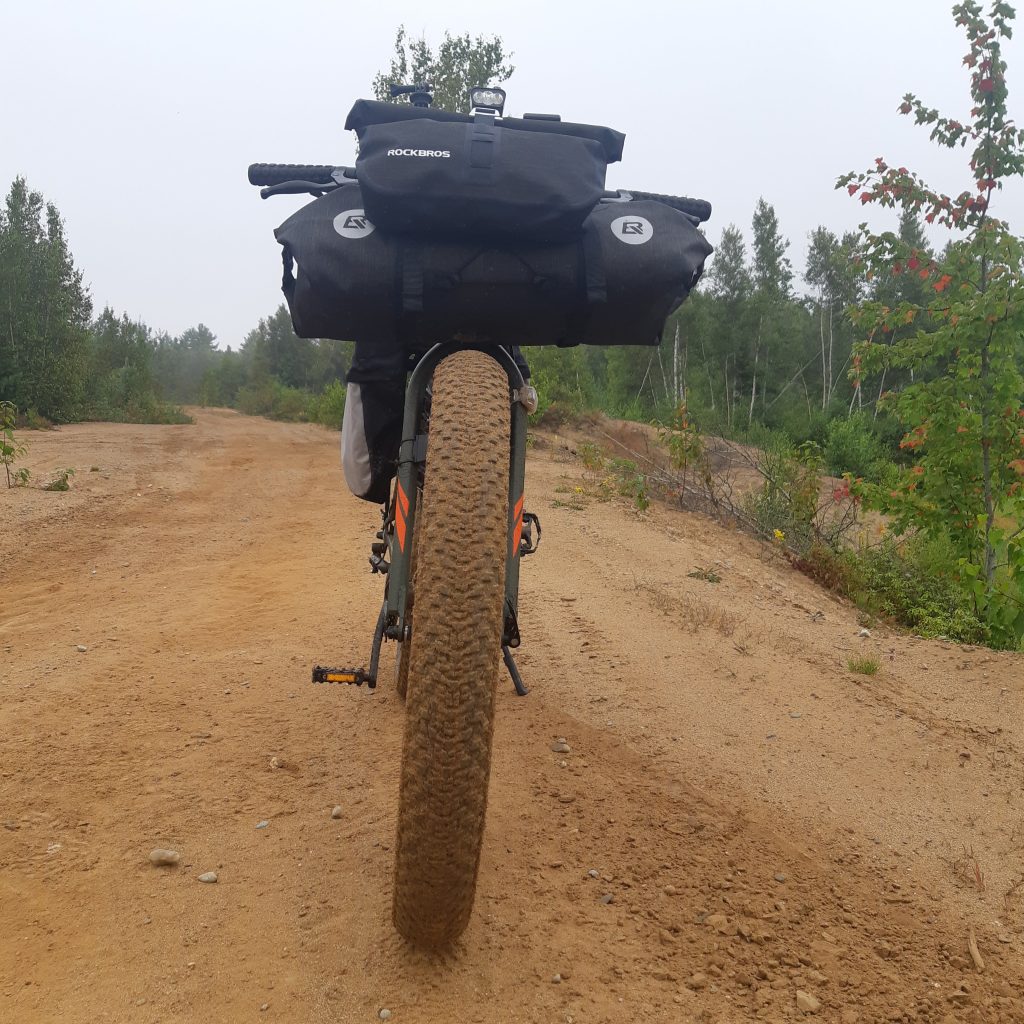
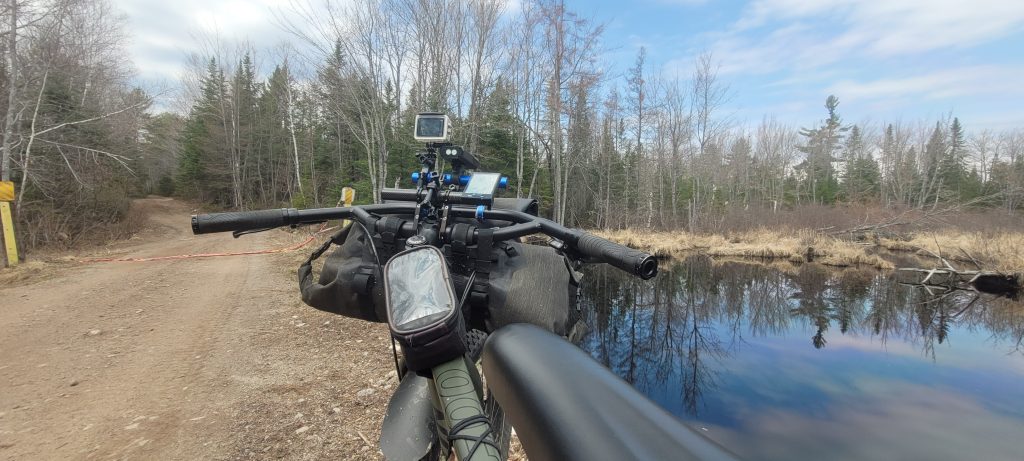
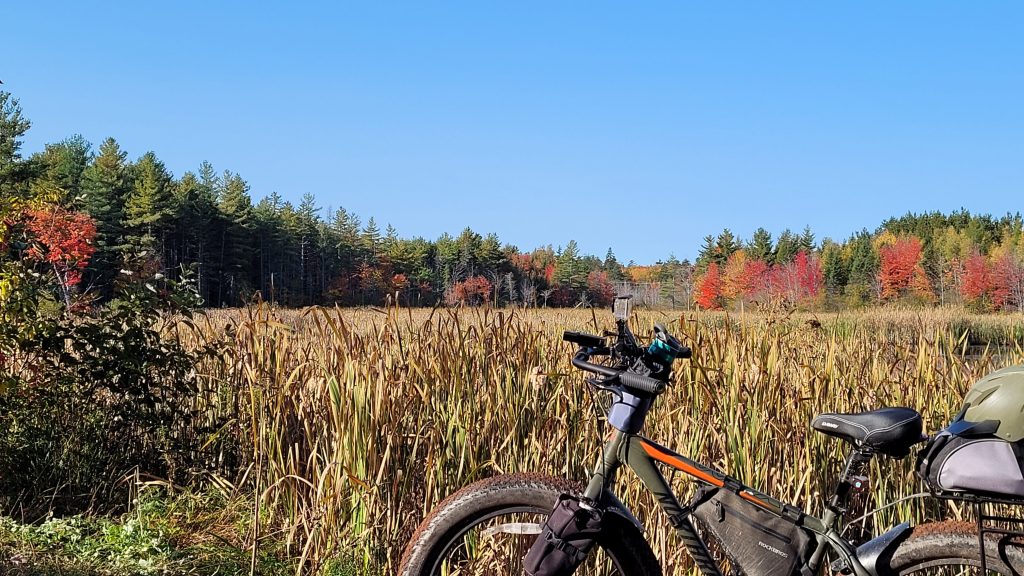
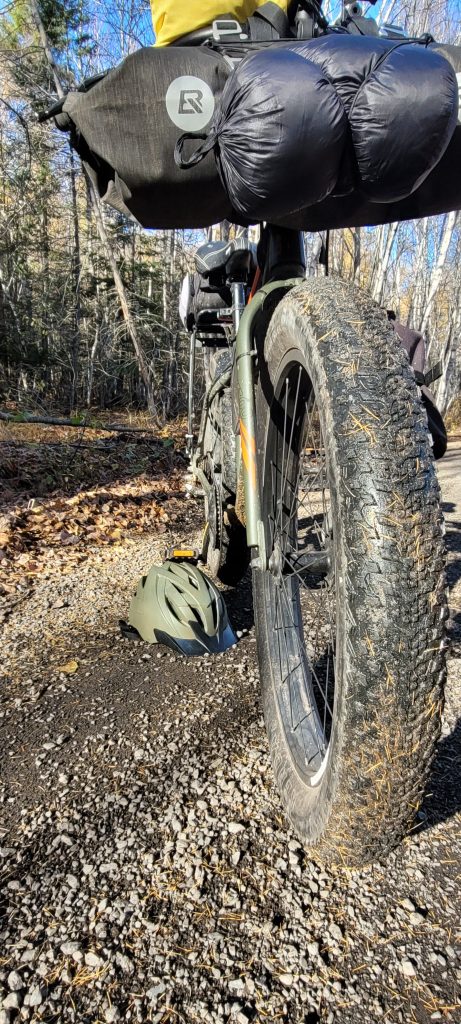
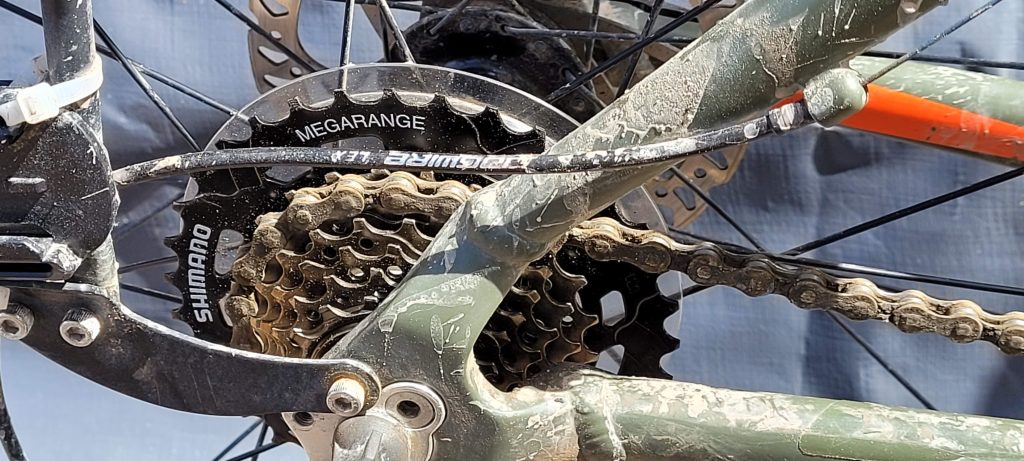
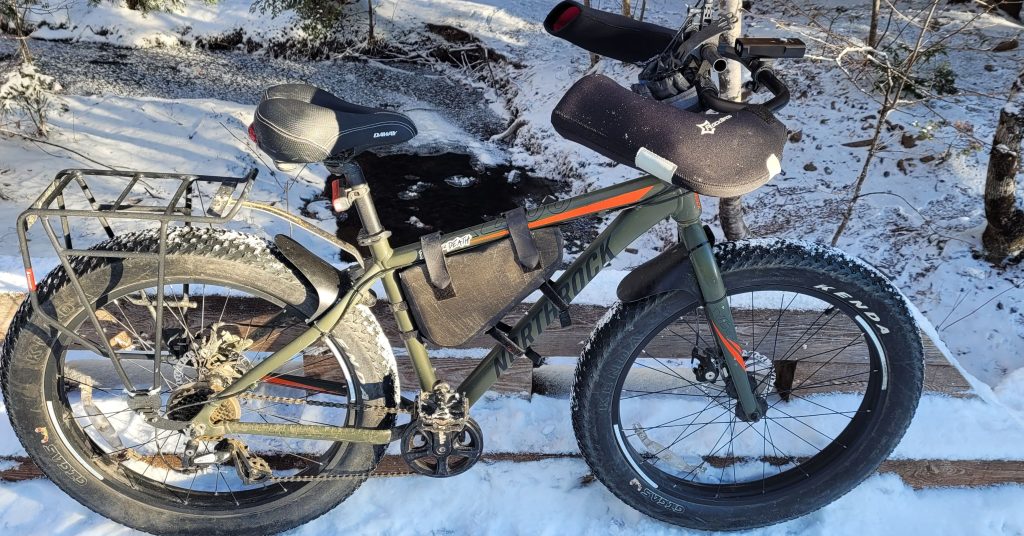
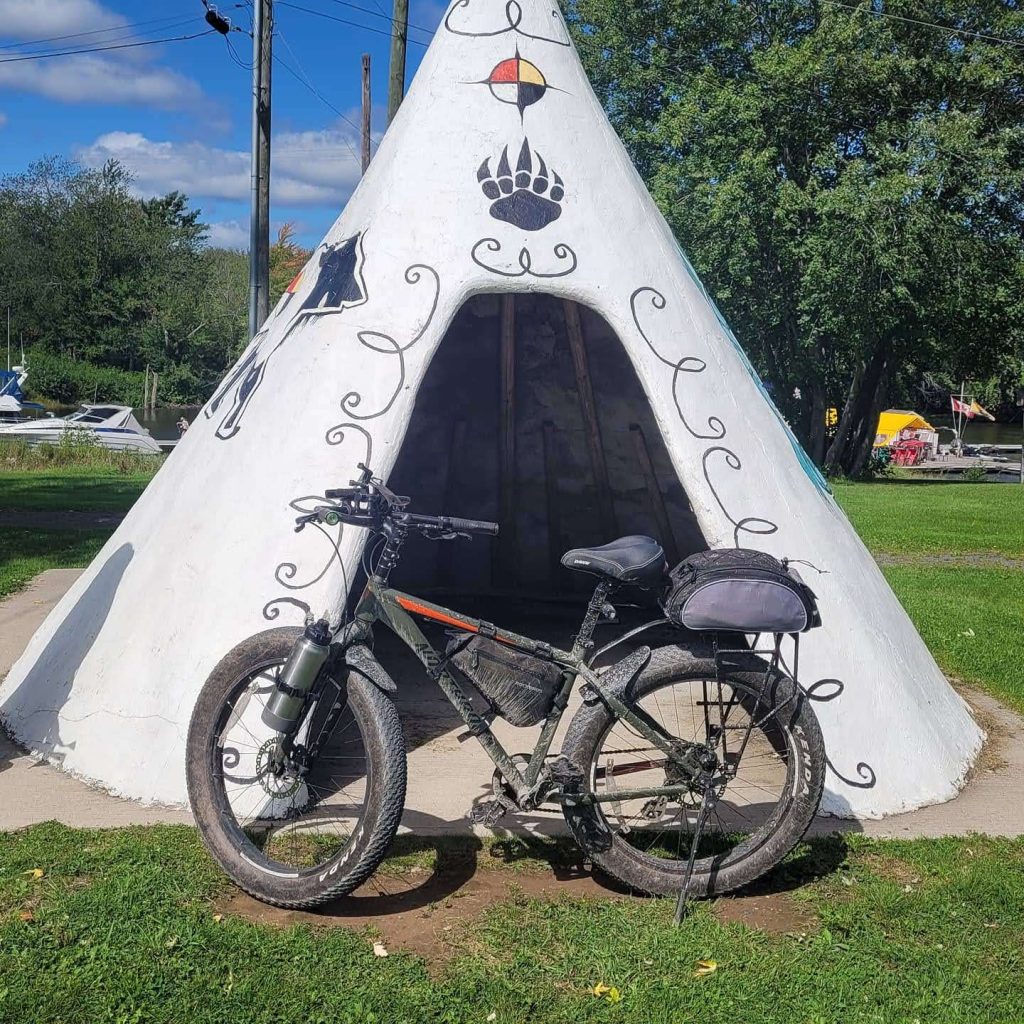
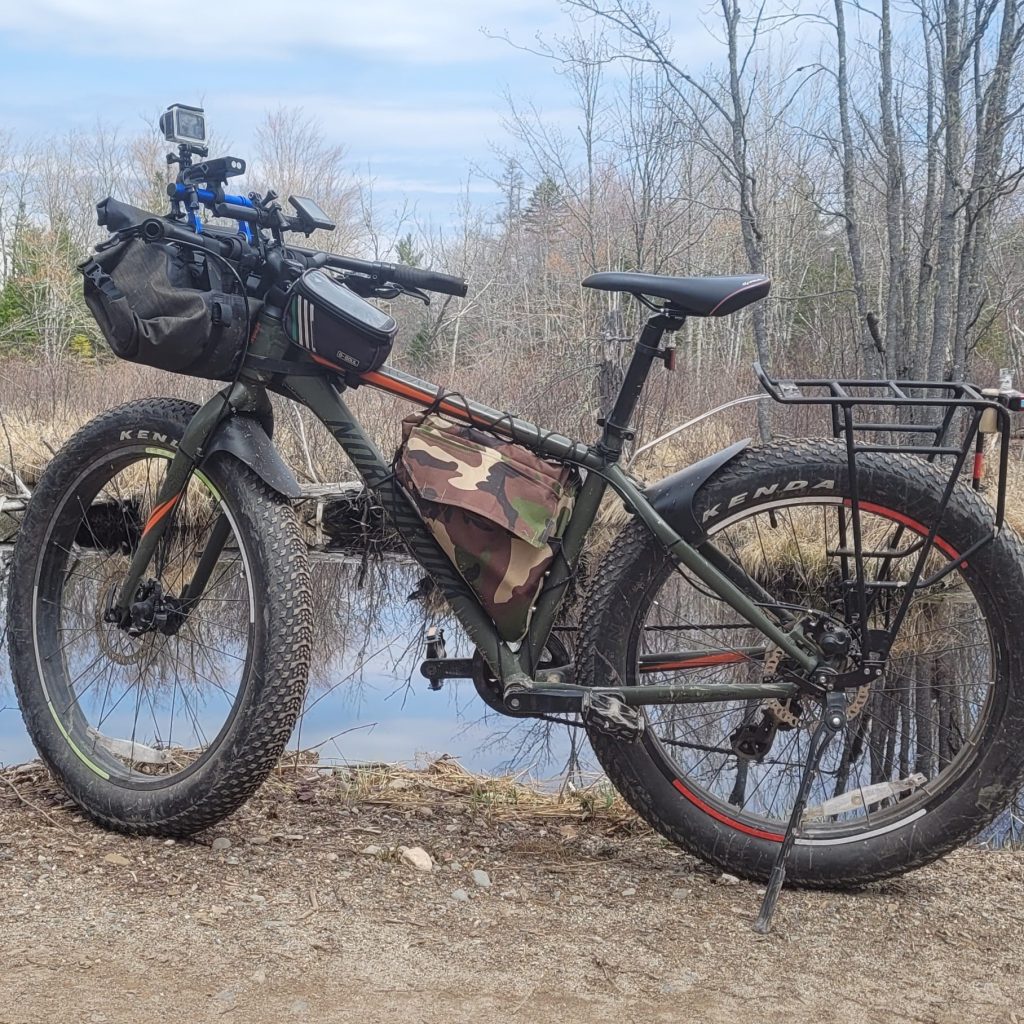
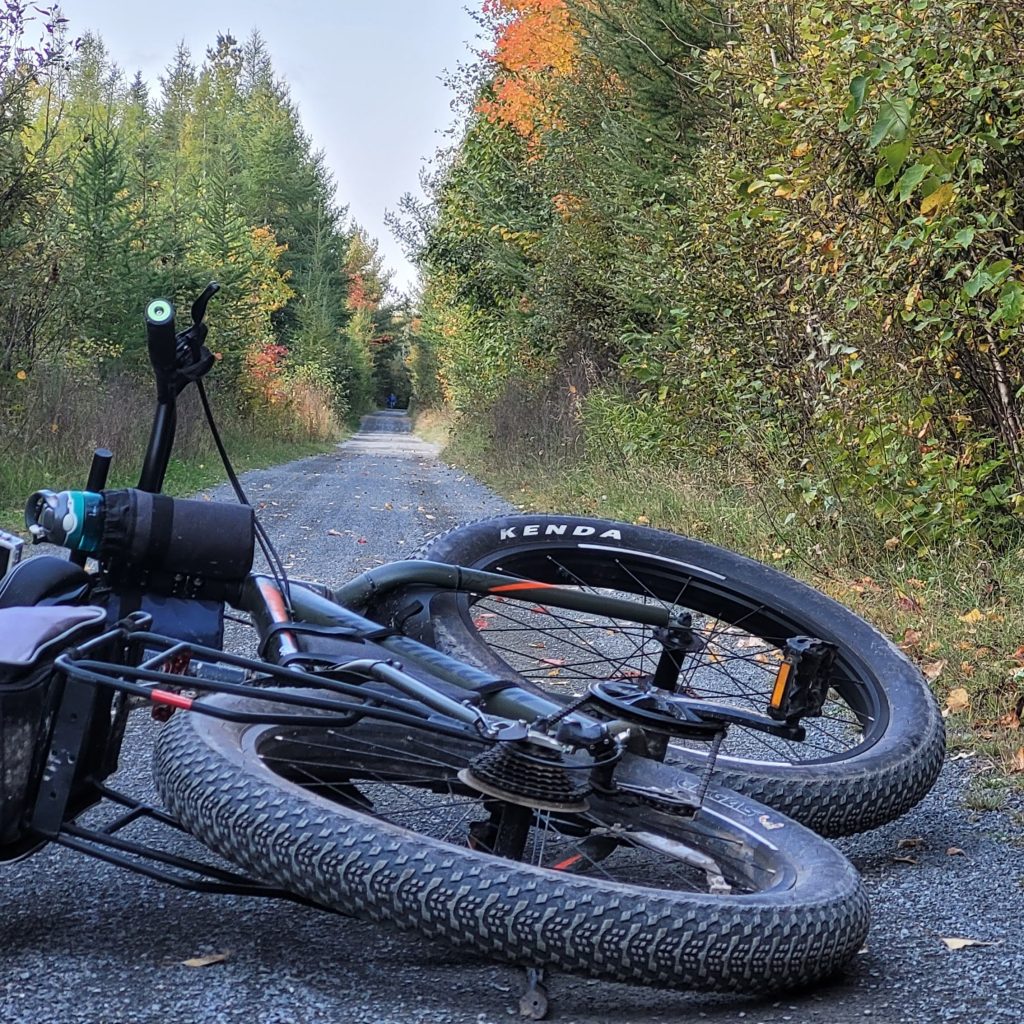
Still Worth It?
If none of those deal-breakers apply to you—or you’re more concerned with the journey than the speed—then yes, fatbikes are still a fantastic bikepacking option.
Still Rolling… But Eyeing an Upgrade
As much as I love my current setup, I’ll be honest—I’ve been thinking about a new (or new-to-me) fatbike for a while now. Something with a bit more range in the gearing, maybe a 10- or 11-speed drivetrain to make those long climbs just a little easier.
Lately, I’ve had my eye on the new Northrock XCF, which goes for about $700 CAD. It’s basically a modernized version of my original Northrock XC00 but comes stock with a 10-speed setup. Same frame, same geometry—just more versatility in the drivetrain. It’s tempting. Really tempting. Given how reliable my current Northrock has been—6,000 km, no mechanical failures, and still on the original tires—it’s hard to argue with the brand.
Then again, I recently spotted a used Moose Fatbike on Marketplace for around half the cost of new. That’s also tempting. Very tempting.
Sell off the old one and roll the dice on something newer with better climbing range? Or stick with what’s proven and keep upgrading piece by piece? I still haven’t made up my mind. And maybe that’s part of the fun too—exploring the options, dreaming about what’s next, and weighing what kind of ride experience matters most.
Final Thoughts
If you’re thinking about bikepacking on a fatbike, don’t overthink it. Just go. Pack light, ride smart, and adjust as you go. Will it be slow? Probably. Will it be tough at times? Absolutely. But it’ll also be one hell of an adventure.
There’s a beauty in moving at your own pace, in hearing the crunch of gravel under 4-inch tires, in rolling past the places most people never see. Fatbikes aren’t just for snow and sand—they’re for anywhere you want to ride a little further, a little slower, and a lot more comfortably.
So yes—can you bikepack on a fatbike? Absolutely. And if you’re over 50, even better. It’s never too late to build strength, explore more, and enjoy the ride.
Important Note: Always ride within your physical limits and be aware of any pre-existing medical conditions. Before starting any new physical activity—especially something endurance-based like bikepacking—consult with your doctor or a medical professional. The goal is to enjoy the ride safely and sustainably.
